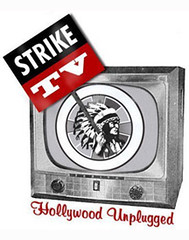Almost every year, I set up the students in my Writing For Public Relations class by asking them “how many words does it take to write the optimum sentence?”
Inevitably, several will enthusiastically answer. Sixteen words!
“Ah ha!” I smile, walking a bit closer to anyone whose eyes might have drifted downward for lack of answer. “It’s always good to know who is reading the assigned chapters … and who might not be. I’m even more impressed that some of you have already committed that gem to memory.”
“Too bad though. That answer is absolutely WRONG.”
Seriously, if it wasn’t for the fun discussion that Doug Newsom’s text has provided me for the last several years, I would instruct the students to immediately leaf over to page 96 (depending on what version), tear the page out, and destroy it before the nasty notion that sixteen words makes a magic sentence sinks in.
Newsom got the idea from Robert Gunning, author of The Technique of Clear Writing, who noted that most modern prose read by the public has an average sentence length of 16 words. Thus, he concludes, if your sentences are much longer than that, you are likely to be diminishing readability.
“How many words does it take to write the optimum sentence?”
As many as it takes to clearly communicate your point. Period. If it takes one word, do that. If it takes 13,955 words, er, it’s likely to be too long, but you never know. It worked for Jonathan Coe. (Previous contenders for the world’s longest sentence include William Faulkner and James Joyce.)
Of course, I forgive Newsom for several paragraphs of misrepresenting sentence lengths, but only because he pays tribute to Albert Einstein who wrote one of the shortest sentences in a scientific paper.
“If, for instance, I say, ‘That train arrives here at 7 o’clock,’ I mean something like ‘The pointing of the small hand of my watch to seven and the arrival of the train are simultaneous events.”
You cannot be much more clear than that, although others in the scientific community may have needed several pages or even books to explain the same. Interesting stuff, this language.
All of this touches on some blog banter, back and forth, with Valeria Maltoni on the economy of language. Most recently, she cited her appreciation for Reader’s Digest, noting that David Ogilvy did too. Ogilvy, for those who don’t know, is one of my favorite greats among advertising copywriters.
Memorable writing does tend to be simple, and not just for copywriters. As I said there: very often, the only reason writers are not able to discuss complex subjects in simple terms is because they either do not understand it themselves, live within a confined industry ecosystem, or try too hard to be clearly brilliant when all they really need to do is be brilliantly clear.
Of course, none of this really means that we must all become Hemingway. Economy of language means thinking about what you write. No matter what the purpose, the burden of communication best remains with the writer and not the reader.
This seems to be the very reason that James Michener struggles over his words, stopping to retype everything four, five, and six times. And, from the opposite end of the spectrum, it seems to be why William Saroyan used to throw things out because they weren’t great. That is, until one day, he realized it didn’t need to be great.
It needed to be clear.
Clarity and word counts are not the same thing. Although G. Donald Gale, with whom I once sat on a panel discussion about writing, was fond of saying even Winston Churchill said short words are the best words
There might be something to that, though I am probably more apt to say the best words are the right words, every time. Because, after all, there are no rules. Not really.

Inevitably, several will enthusiastically answer. Sixteen words!
“Ah ha!” I smile, walking a bit closer to anyone whose eyes might have drifted downward for lack of answer. “It’s always good to know who is reading the assigned chapters … and who might not be. I’m even more impressed that some of you have already committed that gem to memory.”
“Too bad though. That answer is absolutely WRONG.”
Seriously, if it wasn’t for the fun discussion that Doug Newsom’s text has provided me for the last several years, I would instruct the students to immediately leaf over to page 96 (depending on what version), tear the page out, and destroy it before the nasty notion that sixteen words makes a magic sentence sinks in.
Newsom got the idea from Robert Gunning, author of The Technique of Clear Writing, who noted that most modern prose read by the public has an average sentence length of 16 words. Thus, he concludes, if your sentences are much longer than that, you are likely to be diminishing readability.
“How many words does it take to write the optimum sentence?”
As many as it takes to clearly communicate your point. Period. If it takes one word, do that. If it takes 13,955 words, er, it’s likely to be too long, but you never know. It worked for Jonathan Coe. (Previous contenders for the world’s longest sentence include William Faulkner and James Joyce.)
Of course, I forgive Newsom for several paragraphs of misrepresenting sentence lengths, but only because he pays tribute to Albert Einstein who wrote one of the shortest sentences in a scientific paper.
“If, for instance, I say, ‘That train arrives here at 7 o’clock,’ I mean something like ‘The pointing of the small hand of my watch to seven and the arrival of the train are simultaneous events.”
You cannot be much more clear than that, although others in the scientific community may have needed several pages or even books to explain the same. Interesting stuff, this language.
All of this touches on some blog banter, back and forth, with Valeria Maltoni on the economy of language. Most recently, she cited her appreciation for Reader’s Digest, noting that David Ogilvy did too. Ogilvy, for those who don’t know, is one of my favorite greats among advertising copywriters.
Memorable writing does tend to be simple, and not just for copywriters. As I said there: very often, the only reason writers are not able to discuss complex subjects in simple terms is because they either do not understand it themselves, live within a confined industry ecosystem, or try too hard to be clearly brilliant when all they really need to do is be brilliantly clear.
Of course, none of this really means that we must all become Hemingway. Economy of language means thinking about what you write. No matter what the purpose, the burden of communication best remains with the writer and not the reader.
This seems to be the very reason that James Michener struggles over his words, stopping to retype everything four, five, and six times. And, from the opposite end of the spectrum, it seems to be why William Saroyan used to throw things out because they weren’t great. That is, until one day, he realized it didn’t need to be great.
It needed to be clear.
Clarity and word counts are not the same thing. Although G. Donald Gale, with whom I once sat on a panel discussion about writing, was fond of saying even Winston Churchill said short words are the best words
There might be something to that, though I am probably more apt to say the best words are the right words, every time. Because, after all, there are no rules. Not really.




















